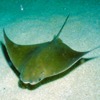
Findings suggest that mature rays likely return to the same nursery grounds in Chesapeake Bay each summer, strengthening case for precautionary management strategies

Findings suggest that mature rays likely return to the same nursery grounds in Chesapeake Bay each summer, strengthening case for precautionary management strategies
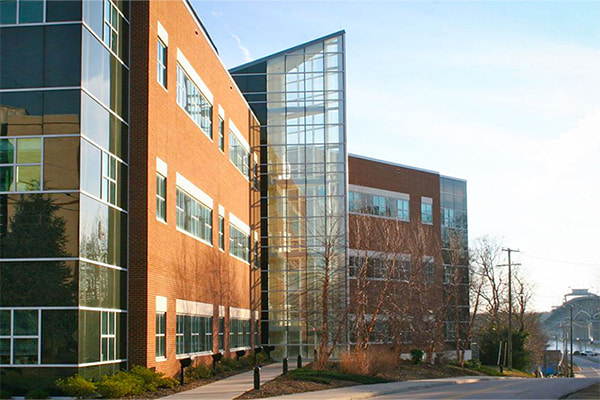
Annual survey of shellfish aquaculture shows Commonwealth's growers sold $56.6 million in clams and oysters in 2016.
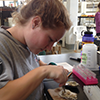
Four rising professionals recently completed a training program in oyster aquaculture at the Virginia Institute of Marine Science, providing them with the skills needed to advance in this rapidly growing industry.
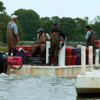
Annual survey of shellfish aquaculture shows Commonwealth's growers sold $48.3 million in clams and oysters in 2015.

A global analysis of the scientific literature shows that VIMS professors hold 4 of the top-20 spots in production of oyster-related research.

Annual survey of shellfish aquaculture shows Commonwealth's growers sold $55.9 million in clams and oysters in 2014, up 24% from 2013.

VIMS researchers join with colleagues, shellfish farmers, and government officials to explore options for improving management of oyster and clam diseases along the U.S. East Coast.

Annual survey of shellfish aquaculture shows Commonwealth's growers sold $45.1 million in clams and oysters in 2013, up 24% from 2012.

The Virginia Institute of Marine Science recently celebrated the graduation of four emerging professionals needed to advance Chesapeake Bay’s rapidly growing oyster-farming industry.

The Virginia Institute of Marine Science recently welcomed the fifth group of interns to its six-month Oyster Aquaculture Training Program (OAT) to learn the skills needed to enter Chesapeake Bay’s rapidly growing oyster-farming industry.

The Virginia Institute of Marine Science recently celebrated the graduation of four emerging professionals who will be joining the ranks of Chesapeake Bay’s rapidly growing oyster aquaculture industry.

Local oyster growers learn how ocean acidification may affect their operations, and how they could best respond.
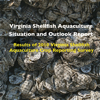
A new report from VIMS and Virginia Sea Grant shows the Commonwealth’s oyster aquaculture industry is poised to begin its biggest growth spurt ever.
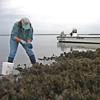
Development of disease resistance among Chesapeake Bay oysters calls for a shift in oyster-restoration strategies within the Bay and its tributaries.
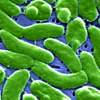
Local oyster growers and VIMS researchers find that moving farmed oysters into saltier waters just prior to harvest nearly eliminates the presence of a bacterium that can sicken humans.

Three-day meeting of the American Fisheries Society’s Tidewater Chapter brings together researchers from VA, MD, and NC.
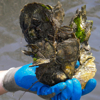
A new study co-authored by VIMS professor Mark Luckenbach shows that decline of oyster reefs is not confined to Chesapeake Bay.

Governor Bob McDonnell has appointed professors Carl Hershner and Roger Mann to state advisory boards concerned with water resources and aquaculture.

Report estimates total, "water-to-table" losses of $30.1 million as imports of Gulf oysters dry up.
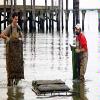
Sales of Virginian-grown shellfish show mixed response to the slowing economy. Plantings and projections of Virginia's oysters and clams were also mixed in 2009.
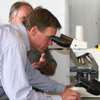
Visit coincides with a growing recognition that increased disease resistance, a local surge in oyster aquaculture, and recently announced federal restoration goals promise new opportunities for restoring Bay oysters.
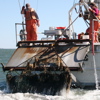
VIMS winter dredge survey shows a 60% increase in Chesapeake Bay's blue crabs since last year, reaching the highest level measured since 1997.
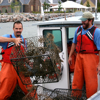
Out-of-work commercial watermen pulled up more than 9,000 derelict "ghost pots" from Chesapeake Bay and its tributaries during the second year of Virginia's landmark Marine Debris Removal Program.

The Lynnhaven River Oyster Restoration Team is honored for innovative efforts to restore the river's oyster population.
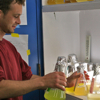
VIMS begins a new program to train the skilled workers needed to advance Chesapeake Bay’s rapidly growing oyster-farming industry.
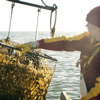
Virginia’s one-of-a-kind program to remove derelict crab traps from Chesapeake Bay yields data that will improve next year’s recovery effort and further reduce inadvertent trapping of Bay organisms.

Winter dredge survey shows that bi-State management actions are having the desired effect.

Contractors will tomorrow begin seeding 3.8 acres of newly constructed reefs in the Great Wicomico River with 15 million disease-tolerant native oysters. The project culminates more than a decade of effort by state and federal agencies and non-profit citizen groups.